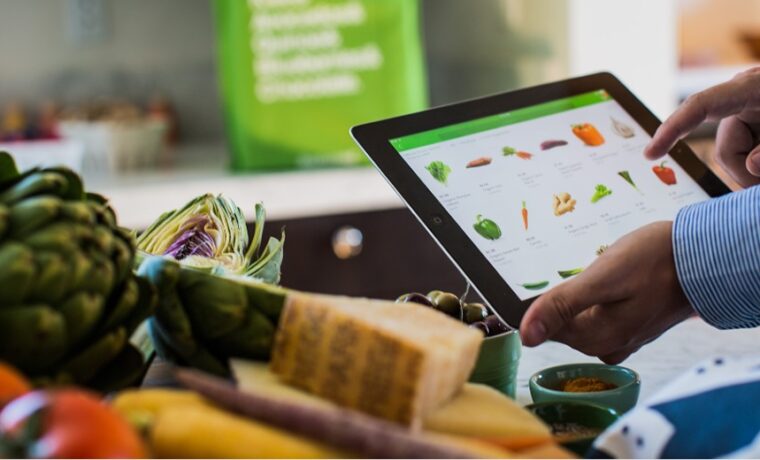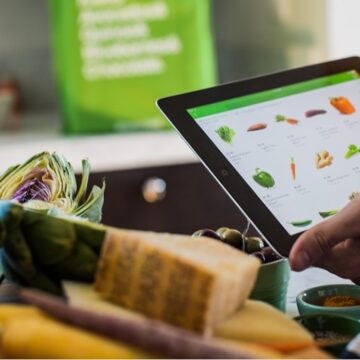Online grocery shopping has become one of the fastest-growing segments in the e-commerce industry. Once seen as a luxury or a niche service, it has now become a mainstream shopping method for millions of households across the United States. As technology advances and consumer behavior evolves, the debate between convenience vs. cost continues to shape how people perceive and use online grocery platforms. While convenience has fueled adoption, cost remains a determining factor influencing long-term consumer loyalty and market growth.
The Evolution of Online Grocery Shopping
Online grocery shopping emerged in the early 2000s but gained real momentum in the past decade, particularly after 2020. The pandemic acted as a catalyst, forcing consumers to adopt digital solutions for essential needs. What began as a necessity quickly became a preferred habit for many. Today, online grocery shopping includes everything from same-day delivery services to subscription-based meal kits and bulk delivery programs.
Changing Consumer Preferences
Modern consumers value time efficiency and flexibility. With work-from-home lifestyles and busy schedules, people prefer ordering groceries online rather than spending hours in physical stores. Mobile apps and websites now offer intuitive browsing, allowing users to compare prices, explore new products, and manage repeat orders within minutes. This convenience has fundamentally reshaped the grocery industry.
Expansion of Product Variety
Initially, online grocery platforms focused primarily on non-perishable items. However, advancements in cold-chain logistics have enabled safe delivery of fresh produce, dairy, meats, and frozen foods. Customers can now order a full week’s worth of groceries, including local and organic items, directly to their doorstep. This variety has increased trust and encouraged more consumers to make the digital switch.
The Driving Force: Convenience
Convenience is the cornerstone of online grocery shopping. It eliminates the traditional pain points of in-store shopping, such as crowded aisles, long checkout lines, and transportation hassles.
Time-Saving Efficiency
One of the most cited reasons for using online grocery services is time savings. Shoppers can complete a full grocery order in under ten minutes, compared to the hour or more it often takes in-store. Scheduled deliveries and auto-refill options add another layer of efficiency, ensuring that essential items never run out.
Personalized Shopping Experience
Online grocery platforms use data-driven algorithms to provide personalized recommendations based on purchase history, dietary preferences, and seasonal needs. This creates a seamless experience where customers see products relevant to their lifestyles, saving them time and decision fatigue. Personalized suggestions also increase customer satisfaction and encourage brand loyalty.
Accessibility and Inclusivity
Online grocery services have also improved accessibility for elderly individuals, people with disabilities, and those living in rural areas. Instead of traveling long distances, they can now order essential goods online and have them delivered safely. This inclusivity has made online grocery shopping a valuable service that transcends demographics.
The Cost Factor: A Major Consideration
While convenience drives adoption, cost remains a critical concern. Consumers often evaluate whether the time saved is worth the additional fees associated with online grocery shopping.
Delivery and Service Fees
Most online grocery orders come with added expenses such as delivery charges, service fees, and tips for drivers. Although some platforms offer free delivery on large orders or through subscription memberships, these added costs can deter price-sensitive shoppers. For example, a small delivery fee per order can accumulate into hundreds of dollars annually for frequent users.
Product Price Markups
Online prices may be higher than in-store prices due to operational costs and logistics. Some retailers increase prices slightly to compensate for packaging and transportation expenses. Shoppers who track grocery budgets closely often notice these differences, prompting them to mix both online and offline shopping to balance convenience and savings.
Subscription Models and Hidden Costs
Many platforms use subscription models to encourage loyalty. While these programs provide benefits like free deliveries or exclusive discounts, they may not always be cost-effective for occasional shoppers. Hidden costs such as cancellation fees or order minimums can also frustrate users who are mindful of expenses.
Technological Advancements Fueling Growth
The success of online grocery shopping relies heavily on technology. Innovations in logistics, artificial intelligence, and automation have significantly enhanced efficiency and customer satisfaction.
Artificial Intelligence and Predictive Ordering
AI is transforming how people shop for groceries online. Platforms use predictive algorithms to anticipate what customers might need next based on past purchases. For example, if a shopper buys coffee weekly, the system might automatically suggest restocking before they run out. This predictive approach makes shopping more efficient and minimizes the risk of forgetting essential items.
Smart Warehousing and Automation
Automated warehouses, robotic pickers, and inventory tracking systems streamline fulfillment operations. These technologies reduce human error, speed up order processing, and ensure accuracy. The integration of AI with logistics has made same-day delivery a reality in many regions, elevating the standard for convenience.
Mobile Integration and Voice Ordering
Voice-enabled shopping through smart devices has made the process even more seamless. Consumers can add items to their cart using voice commands while cooking or multitasking. Mobile integration also allows real-time order tracking, instant notifications, and easy payment processing through digital wallets.
Environmental and Sustainability Considerations
As online grocery shopping grows, sustainability has become a vital issue. Both businesses and consumers are increasingly aware of the environmental impact of packaging, transportation, and waste.
Eco-Friendly Packaging
Many online grocery companies are shifting to biodegradable or recyclable packaging materials to minimize waste. Reducing the use of single-use plastics and promoting reusable delivery bags are now standard sustainability practices across the industry.
Optimized Delivery Routes
Data analytics helps delivery services plan efficient routes to reduce fuel consumption and emissions. Grouped deliveries, electric delivery vehicles, and local fulfillment centers all contribute to lowering the carbon footprint of online grocery logistics.
Consumer Awareness
Shoppers are now more conscious of sustainability when making purchases. Many prefer retailers that support ethical sourcing, local farming, and carbon-neutral initiatives. This awareness is shaping how companies design their supply chains and marketing strategies.
The Psychological Factor: Trust and Quality Assurance
Despite its advantages, some consumers still hesitate to embrace online grocery shopping due to concerns about product quality and freshness.
Trust in Freshness and Accuracy
Fresh produce and perishable items require special handling. Some shoppers worry that the items they receive might not meet their standards for freshness or ripeness. To build trust, platforms now use transparency tools such as product photos, freshness guarantees, and detailed item descriptions.
Customer Reviews and Ratings
Peer reviews and ratings have become a significant trust factor. Before purchasing, shoppers read feedback from other customers to ensure quality. This social proof has made it easier for new users to feel confident about trying online grocery services.
Replacement and Refund Policies
Flexible refund and replacement policies also play an essential role in customer trust. Clear policies that allow easy returns for incorrect or damaged items enhance consumer confidence and reduce perceived risk.
Economic Impact on Retail and Supply Chains
The growth of online grocery shopping has disrupted traditional retail structures. Physical stores now integrate digital systems to compete, while supply chains are adapting to faster, more fragmented delivery models.
Hybrid Retail Models
Many grocery retailers have adopted hybrid systems where customers can order online and pick up in-store. This click-and-collect model offers a balance between convenience and cost, eliminating delivery fees while maintaining flexibility.
Shift in Employment Dynamics
The expansion of online grocery logistics has created new job categories such as personal shoppers, delivery drivers, and warehouse technicians. However, automation continues to reshape the labor market, emphasizing the need for digital skills and logistics expertise.
Local Economy and Small Businesses
Small and local grocery stores are leveraging digital platforms to reach wider audiences. This shift not only increases their competitiveness but also contributes to the diversification of the online grocery ecosystem.
Balancing Convenience and Cost
The key challenge for both retailers and consumers lies in finding the right balance between convenience and cost. While consumers enjoy the ease of digital shopping, they remain price-sensitive, especially for essential goods like groceries.
To sustain long-term growth, companies must focus on:
- Transparent pricing structures that clearly communicate delivery fees and markups.
- Loyalty programs that reward frequent shoppers without hidden costs.
- Flexible delivery options that cater to varying budgets and schedules.
- Sustainability initiatives that appeal to environmentally conscious buyers.
Ultimately, the future of online grocery shopping depends on how well businesses can align value with affordability while maintaining a seamless user experience.
FAQs
Q1: Is online grocery shopping cheaper than in-store shopping?
It depends on the platform and location. While some online prices are competitive, delivery fees and markups can make certain products more expensive than in-store purchases.
Q2: How can shoppers save money when buying groceries online?
Using discount codes, subscription plans, and bulk purchasing options can help lower costs. Choosing slower delivery options and avoiding small orders also minimizes fees.
Q3: Are online groceries safe and fresh?
Yes, most platforms have strict quality controls and cold-chain logistics to ensure freshness. Many also offer refunds or replacements for damaged or unsatisfactory items.
Q4: What role does technology play in online grocery growth?
Technology drives every aspect of the process—from AI-driven recommendations and automated warehouses to real-time delivery tracking and mobile integration.
Q5: What is the future outlook for online grocery shopping?
The market is expected to continue growing as technology improves and consumers prioritize convenience. Hybrid models that combine digital ordering with local fulfillment will likely dominate the future landscape.
The rise of online grocery shopping reflects a broader shift toward digital consumerism. While convenience has accelerated its growth, cost and sustainability remain defining factors that will shape the industry’s future. The brands that succeed will be those that strike a perfect balance between affordability, reliability, and innovation—offering consumers the best of both worlds.
















